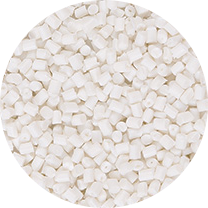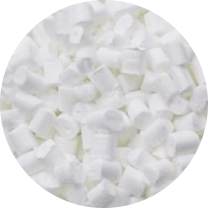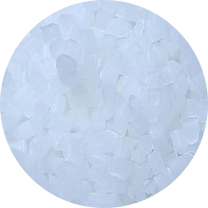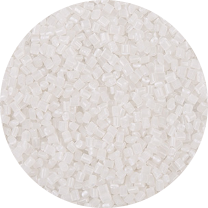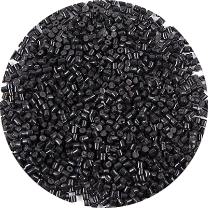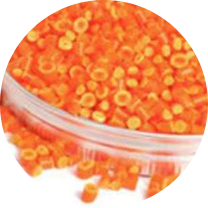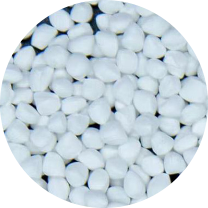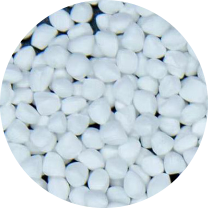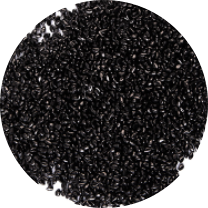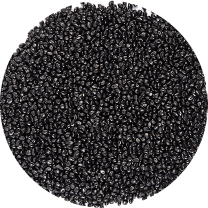How High-Quality White Masterbatch Solves Color Variance, Yellowing, and Streaks in Plastic Injection Molding
- 1 The Root Causes of Common Injection Molding Defects
- 2 The Role of High Dispersion White Masterbatch for Injection Molding
- 3 Solving Problems with Specialized White Masterbatch
- 4 Achieving Excellence with Cost Effective White Masterbatch Solutions
- 5 The Final Word: Choosing the Right Supplier
- 6 Frequently Asked Questions (FAQs)
- 6.1 1. How does your white masterbatch ensure consistent color between product batches?
- 6.2 2. Do you have white masterbatch that complies with relevant regulations for specific applications like medical devices and food packaging?
- 6.3 3. Besides white masterbatch, what other technical advantages and products does your company offer?
In the world of plastic manufacturing, achieving consistent, high-quality color is paramount. Yet, many manufacturers struggle with common defects like color variance, yellowing, and visible streaks in their finished products. The secret to overcoming these challenges often lies in one critical component: a high-quality Injection White Masterbatch.
The Root Causes of Common Injection Molding Defects
Before we can solve a problem, we must first understand its source. The seemingly minor imperfections in a finished product often stem from fundamental issues with the masterbatch itself.
Why Does Color Variance Occur?
Color variance is a result of inconsistent pigment distribution. If the titanium dioxide (TiO₂) pigment is not properly dispersed within the carrier resin, some parts of the product will be whiter than others, leading to an unacceptable color shift. This is a primary reason why investing in a high-quality masterbatch is crucial.
What Causes Plastic Yellowing?
Yellowing, or "yellowing," is a common defect caused by thermal degradation or a lack of UV resistance. The primary culprits are low-quality TiO₂ pigments and inappropriate carrier resins that cannot withstand high processing temperatures, leading to a breakdown of the material.
The Problem with Streaks and Flow Lines
Streaks and flow lines are visible lines on the surface of the plastic part. These defects are often caused by poor dispersion, where pigment clumps fail to melt and mix uniformly with the base resin. This issue is particularly visible in larger parts and thin-walled products.
The Role of High Dispersion White Masterbatch for Injection Molding
A masterbatch is only as good as its dispersion. A highly dispersed masterbatch ensures uniform color and eliminates many of the issues mentioned above. Below is a comparison of low-quality versus high-quality masterbatches in terms of dispersion:
Low-Quality Masterbatch vs. High-Quality Masterbatch
| Aspect | Low-Quality Masterbatch | High-Quality Masterbatch |
| Pigment Dispersion | Poor, with agglomerates and clumps. | Excellent, with uniform, finely-dispersed pigment. |
| Color Consistency | High risk of color variance and streaks. | Consistent, uniform color from batch to batch. |
| Processing Stability | Can cause inconsistent melt flow and processing issues. | Improves melt flow and overall processing stability. |
| Final Appearance | Dull finish with visible defects. | Bright, clean, and defect-free surface. |
The Power of High-Quality Pigment
- A superior masterbatch uses high-grade, micro-sized TiO₂ pigment, which offers a higher refractive index and opacity.
- This ensures superior hiding power and whiteness, even at lower concentrations.
The Importance of Superior Dispersion
- Dispersion is the key to uniform color and defect-free parts.
- Proper dispersion prevents pigment agglomerates that lead to streaks and a mottled appearance.
Solving Problems with Specialized White Masterbatch
Beyond general-purpose use, specialized white masterbatches are engineered to meet the unique demands of specific applications.
UV Resistant White Masterbatch for Outdoor Plastics
Addressing UV Degradation
- Plastics used outdoors are highly susceptible to UV degradation, which causes yellowing and brittleness over time.
- This specialized masterbatch contains UV stabilizers that protect the plastic and maintain its color and mechanical properties, ensuring long-term durability.
Medical Grade White Masterbatch for Plastic Devices
Meeting Stringent Regulations
- Medical devices require materials that are non-toxic, safe, and biocompatible.
- Medical Grade White Masterbatch for Plastic Devices is produced under strict quality control to meet standards like ISO 10993 and USP Class VI, guaranteeing safety for sensitive applications.
Food Contact White Masterbatch for Packaging
Ensuring Safety and Compliance
- For food packaging, the masterbatch must not migrate harmful substances into the food.
- Food Contact White Masterbatch for Packaging is formulated with FDA-approved ingredients, ensuring compliance with global food safety regulations and protecting both the product and the consumer.
Achieving Excellence with Cost Effective White Masterbatch Solutions
While cost is always a factor, a cheaper masterbatch can often lead to higher overall production costs due to increased defect rates and the need for higher let-down ratios. The true value lies in efficiency.
Balancing Performance and Price
- A high-quality masterbatch might have a higher price per pound, but its superior concentration means you need to use less of it to achieve the same or better results.
- This lower "let-down ratio" directly translates to a lower cost per finished part.
The Value of a Lower Let-Down Ratio
Let's compare the let-down ratio of two hypothetical masterbatches:
| Characteristic | High-Quality Masterbatch | Low-Quality Masterbatch |
| Let-Down Ratio | 1% (e.g., 1 part masterbatch per 99 parts resin) | 3% (e.g., 3 parts masterbatch per 97 parts resin) |
| Performance | Superior whiteness, opacity, and no defects. | Subpar color, potential for defects, and inconsistency. |
| Cost per Part | Lower overall material cost due to minimal usage. | Higher overall material cost and potential for wasted product. |
Choosing a **Cost Effective White Masterbatch Solution** is about understanding the total cost of ownership, not just the price per unit.
The Final Word: Choosing the Right Supplier
For any manufacturer, selecting the right Injection White Masterbatch supplier is more than just a purchase—it's a strategic decision. It's about partnering with a company that understands your needs and provides a product that guarantees consistent quality, enhances your brand, and ultimately contributes to your bottom line. By prioritizing quality and specialized solutions, you can eliminate common production headaches and produce plastics that truly stand out in the market.
Frequently Asked Questions (FAQs)
1. How does your white masterbatch ensure consistent color between product batches?
Answer: Changzhou Runyi New Material Technology Co., Ltd. understands the importance of color consistency for our customers. Our white masterbatch utilizes high-dispersion technology and high-purity TiO₂ pigment to ensure uniform pigment distribution during production, fundamentally eliminating issues like color variance and streaks. Furthermore, our professional R&D team uses a strict quality control process and advanced testing equipment to test each batch for chromaticity, whiteness, and dispersion, guaranteeing that every batch's color is highly consistent with the standard sample.
2. Do you have white masterbatch that complies with relevant regulations for specific applications like medical devices and food packaging?
Answer: Yes, we not only provide general-purpose products but also specialize in offering customized solutions for specific industries. Relying on our extensive R&D accumulation, Changzhou Runyi New Material Technology Co., Ltd. has successfully developed food-grade white masterbatch that complies with FDA and EU food contact regulations, as well as medical-grade white masterbatch that meets the stringent standards of the medical industry. Our products are guaranteed to be safe and non-toxic, satisfying our clients' strict requirements for regulatory compliance and helping them secure product certifications.
3. Besides white masterbatch, what other technical advantages and products does your company offer?
Answer: Changzhou Runyi New Material Technology Co., Ltd. is not only a well-known producer and seller of color masterbatch, but we are also actively expanding into new material fields. Since 2020, we have established an R&D team for melt-blown fabric projects and have invested in multiple production lines, including for melt-blown fabric black masterbatch, oil electret masterbatch, fluorocarbon polymer electret masterbatch, and water electret masterbatch. Our carbon black and electret products are produced according to international standards, and we continuously develop new varieties to meet market needs. We are dedicated to providing high-quality products to our customers while maximizing energy conservation, consumption reduction, and environmental protection through technological innovation.
HDPE PE Plastic Film Blowing White Masterbatch White Plastic Granule
prevNo previous article
nextHow to Choose the Right Carbon Black Masterbatch for Your Application: A Guide to UV, Conductive, and Color Properties


 English
English 中文简体
中文简体 한국어
한국어 عربى
عربى
